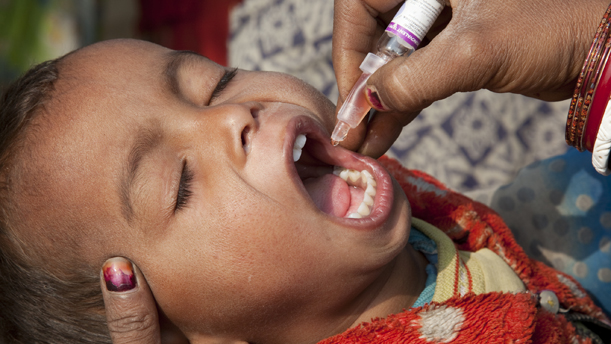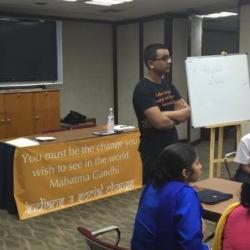#TransformationTuesday: Polio Eradication

This article is the second in a series of #TransformationTuesday articles that will look at the past, present, and future of social justice issues in India to create a more profound understanding among both Indians and non-Indians alike about issues that are much more complicated than they appear on surface. Yet, we do not expect these articles to serve as a source of all knowledge about the topics we cover; rather, they should help create a basic understanding that can be expanded with further research.
—–
At one point, India had 200,000 polio cases a year. In 2009, India had half the world’s polio cases. In 2011, they had 1. The following is a graph from an UNICEF report depicting the of the Global Polio Eradication Initiative:

Polio is no longer considered endemic in India, and there are only three countries left where the World Health Organization still considers Polio to be endemic: Afghanistan, Pakistan, and Nigeria. In 2012 and 2013, India saw no new cases of Polio.
Indian public health system is not one of the best in the world. In fact, it spends less per capita on health care costs than most major nations. The size of its population and the diversity of its citizenry make any large scale effort a complicated and difficult one. Yet, India went from being the center of Polio cases to becoming Polio free. How did India get this far?
In 1988, the Global Polio Eradication Initiative began to tackle Polio worldwide. Real progress didn’t start in India until later in the next decade. In 1995 and 1996, India started to organize nationwide immunization days. In 1997, India established the National Polio Surveillance Project to keep track of new Polio cases and to contain how it was spread. It currently has 27,000 reporting units across India. In 2004, they started to hold vaccination stations at key transit points such trains, bus stands, etc. Every round of immunization involves 2.3 million volunteers vaccinating 170 million children.
India had many factors which made it harder to fight Polio. Polio spreads through contaminated water, and the lack of proper hygiene and filtration made it hard to eradicate it in the poor areas of the country. For a while, some Muslims in India were paranoid that the vaccines were a ploy to sterilize their children to contain their populations. This led to an increase in the rate of polio among Muslims, but Indian social workers and health officials were able to overcome this with better communication and education programs.
This is amazing for India and the global health sector in so many ways. It is amazing that a country of 1 billion people succeeded in eradicating a disease that spread so quickly. It is amazing that the India government contributed $2 billion dollars towards eradication efforts. It is amazing that an entire international coalition of organizations, The Bill and Melinda Gates Foundation, UNICEF, WHO, United States Center for Disease Control, Rotary International, and countless others worked together to achieve this end.
Polio is gone, but India must continue to push vaccinations and prevention methods. India is doing a great job of this by launching efforts to provide vaccinations at border crossings and by monitoring all visitors. In an effort to keep Polio out, India is requiring travelers from and to countries with cases of polio to get the vaccination. Steps likes these are key to ensuring that the hard-work that has been put in by both the Indian government and also by international organizations isn’t reversed. Due to the nature of the disease, all it takes is one child with Polio, who mistakenly crosses the border from Pakistan, to infect an entire village with Polio. This is why continued immunization efforts are key to prevent a relapse. India must now turn its focus to other diseases, such as Tuberculosis, and hope that they can achieve the same results they did with Polio.
[Image Attribute: Gates Foundation via Compfight cc]



